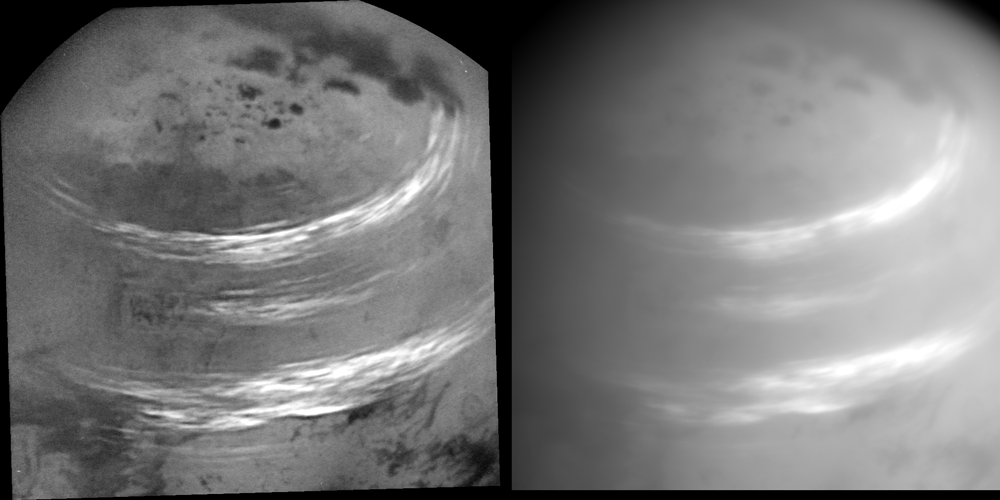
NASA’s Cassini probe has now survived its third dive into Saturn’s rings, specifically the gap between the innermost rings and the planet itself. This is just the latest in a series of 22 such planned dives for the Grand Finale phase, before the mission ends on Sept. 15, 2017. This time, as well as obtaining more close-up views of the rings and Saturn’s atmosphere again, Cassini took a look at Saturn’s largest moon Titan from a distance, and saw some of the longest and brightest clouds in the hazy atmosphere that it has seen in the entire mission. Even though Cassini won’t be making any more close flybys of Titan, these new views are fantastic.
This latest ring dive was similar to the first two, where Cassini plunges through the gap separating Saturn and its innermost rings. It was a bit uncertain before just how risky this might be, since even small ring particles hitting the spacecraft could cause significant damage. As the first two dives showed, however, that risk seems to be minimal, with a much lesser amount of rings particles than previously thought. In fact, the gap is almost completely empty, and the largest particles encountered so far are no more than dust. Cassini crossed Saturn’s ring plane at 0613 GMT (2:13 a.m. EDT) on Tuesday, May 9, passing about 1,680 miles (2,710 kilometers) from Saturn’s cloud tops.
As noted earlier by Cassini Project Manager Earl Maize of NASA’s Jet Propulsion Laboratory in Pasadena, California, “The region between the rings and Saturn is ‘the big empty,’ apparently. Cassini will stay the course, while the scientists work on the mystery of why the dust level is much lower than expected.”
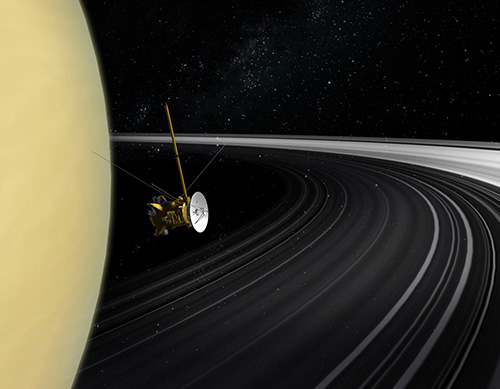
Cassini’s large high-gain radio antenna, 13 feet (4 meters) wide, is used as a shield during the dives as necessary, to protect the array of instruments below it on the spacecraft. This method was especially necessary on the first dive, since no spacecraft had ever entered this region before. So far at least, Cassini has been able to pass through the gap with no damage at all.
As with all these ring dives, Cassini is able to get closer views of Saturn’s inner rings and atmosphere than ever before. The views have been incredible, showing extremely fine detail in the rings, with broader rings being composed of thousands of smaller “ringlets.” The orderly complexity within the rings is breathtaking, to say the least. Cassini has also observed many smaller circular storms in Saturn’s atmosphere, in addition to the incredible blue-colored cyclone at the north pole. This storm itself is in the middle of the bizarre hexagon, a complex jet stream, which surrounds the pole.
This time around, Cassini also took another look at Titan, and even though isn’t as close as it was during other flybys, still observed some bright, feathery methane cloud formations in the moon’s hazy atmosphere. Such clouds have been seen before, but these ones are particularly striking – long and wispy, stretching partway around the moon. Three main clouds can be seen, between 30 and 38 degrees north latitude. There is also a fainter, middle band of cloud between 44 and 50 degrees north latitude, in a region where similar cloud bands have been observed during the past year. A northern band is also seen between 52 and 59 degrees north latitude, as well. Apart from those, there are a few more isolated cloud streaks, near the southern edge of the north polar terrain close to 63 degrees north and as far south as 23 degrees north latitude. The new Titan images were taken on May 7, 2017, from a distance of 303,000 miles (488,000 kilometers). The dark regions near the top of the images are some of the methane/ethane lakes and seas, common near Titan’s north pole.
“These are some of the most intensely bright clouds Cassini has observed on Titan, likely due to high-cloud tops,” NASA officials said. “This activity also represents the most extensive cloud outburst on Titan since clouds reappeared at northern mid-latitudes in early 2016.”
Typically, Titan has a blander appearance, with its opaque haze obscuring the surface from view, much like Venus. But the brighter methane clouds do show up as well, as seasons slowly change on Titan during Saturn’s 29-year long orbit around the Sun.
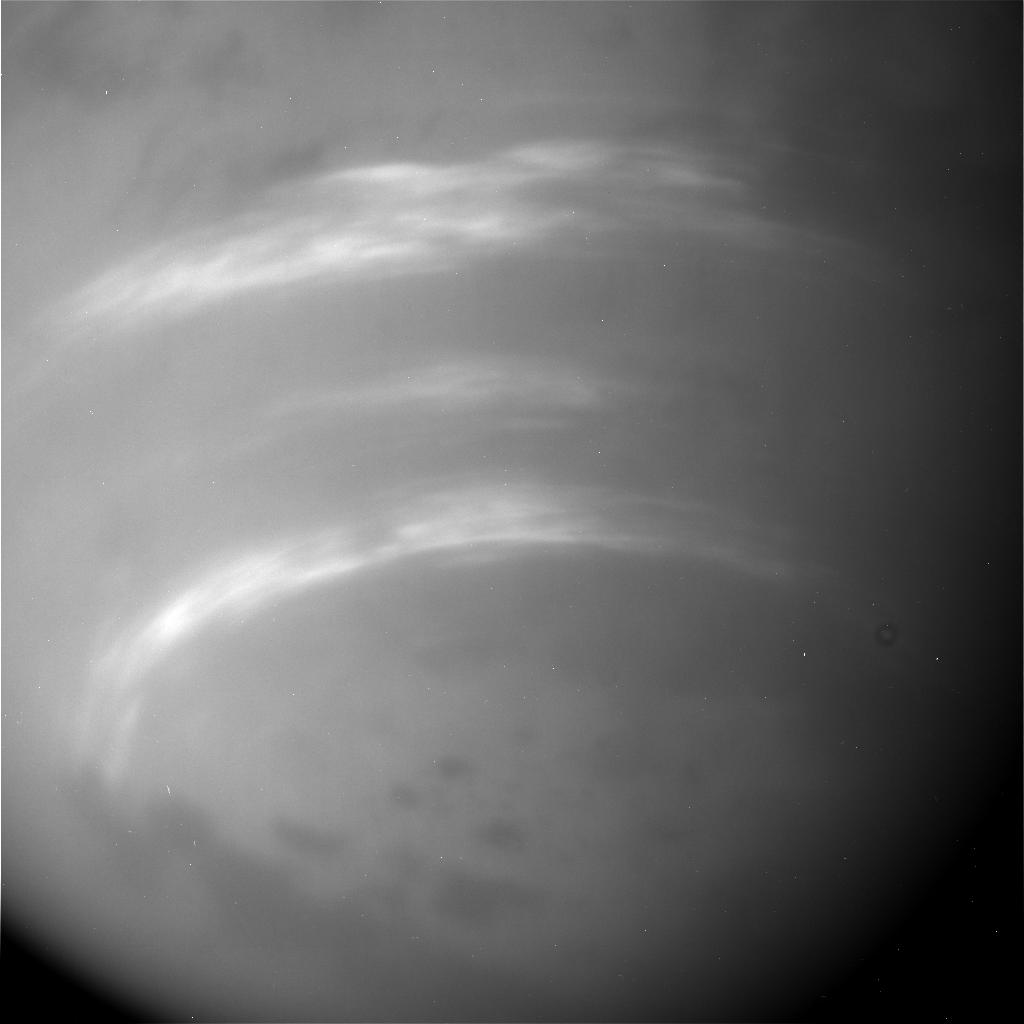
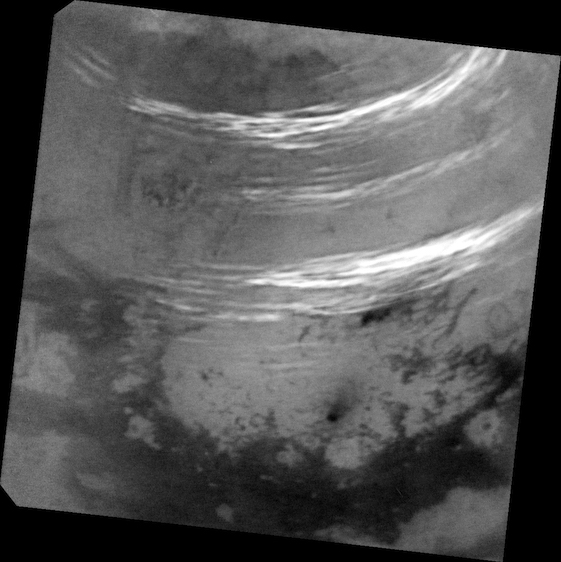

The clouds, although composed of methane instead of water vapor, add to the Earth-like similarities of Titan, at least by outward appearances. Below the clouds and haze are rivers, lakes and seas, but again, composed of liquid methane/ethane. Visually, they are strikingly similar to ones on Earth however. Methane rain completes the Earth-like hydrological cycle on Titan. In the equatorial regions, vast stretches of dark sand dunes, composed of organics (tholins) cover the landscape. Elsewhere there are tall mountain ranges.
On April 21, Cassini conducted its last-ever close flyby of Titan, shortly before its first ring dive on April 26. These will be the last close-up views we have of this enigmatic world until a new mission can be launched.
“Cassini’s up-close exploration of Titan is now behind us, but the rich volume of data the spacecraft has collected will fuel scientific study for decades to come,” said Linda Spilker, the mission’s project scientist at NASA’s Jet Propulsion Laboratory in Pasadena, California.
Another image released this week is a stunning view of Saturn’s north polar hexagon and central storm, with the rings in the background. It was actually taken on January 22, but just released now. The north polar region was in darkness for much of Cassini’s mission since 2004, but now is in full sunlight.
During the first and second ring dives, Cassini sent back stunning new images of Saturn’s rings and atmosphere. Although individual particles can’t be seen, as most are the size of pebbles or even dust, the level of detail is unprecedented. Saturn’s rings are complex, yet elegantly beautiful.
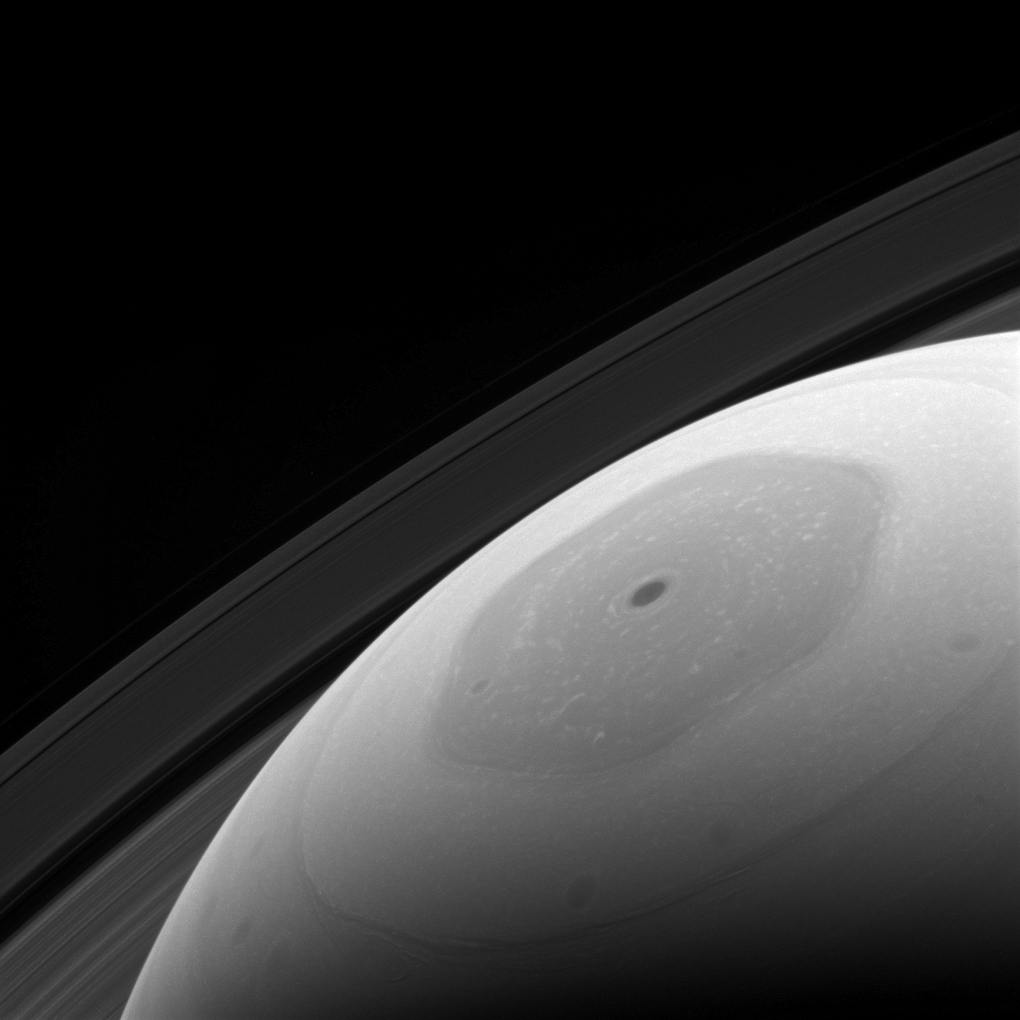
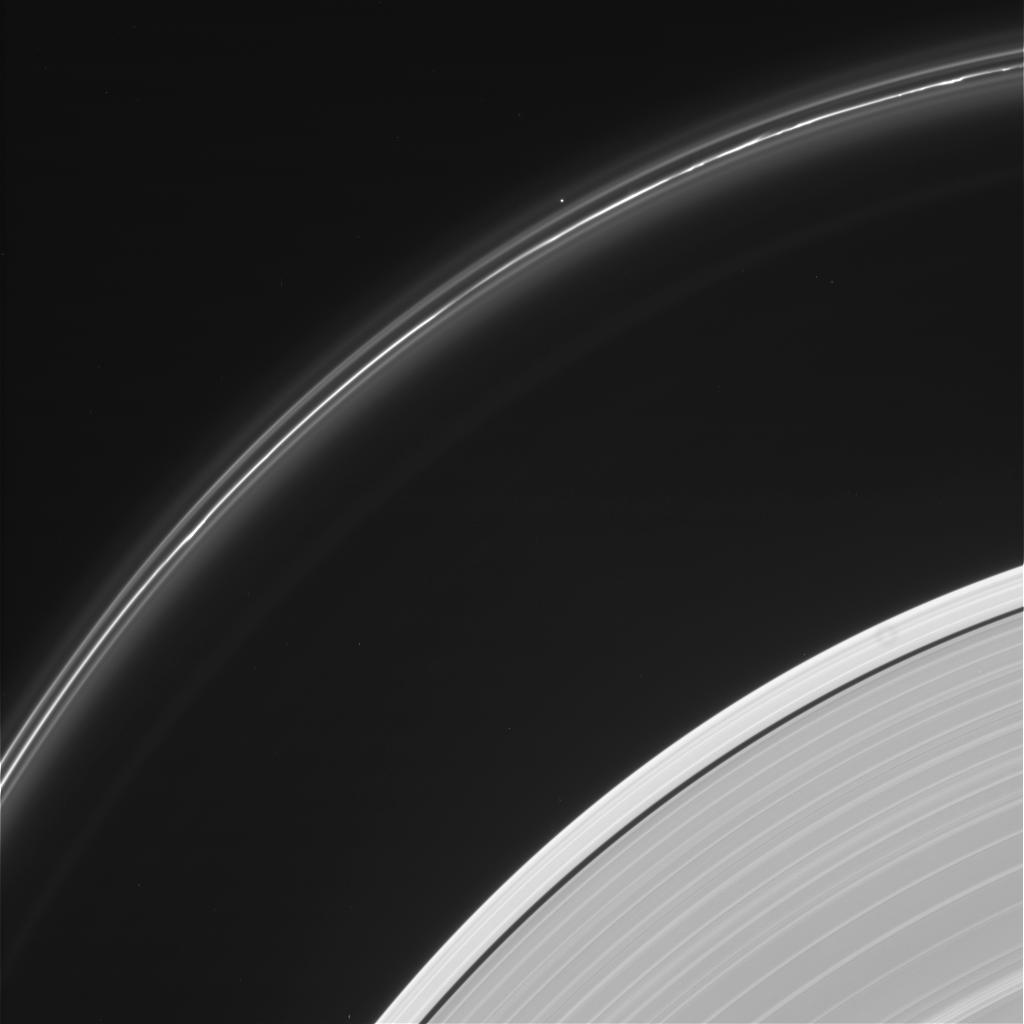
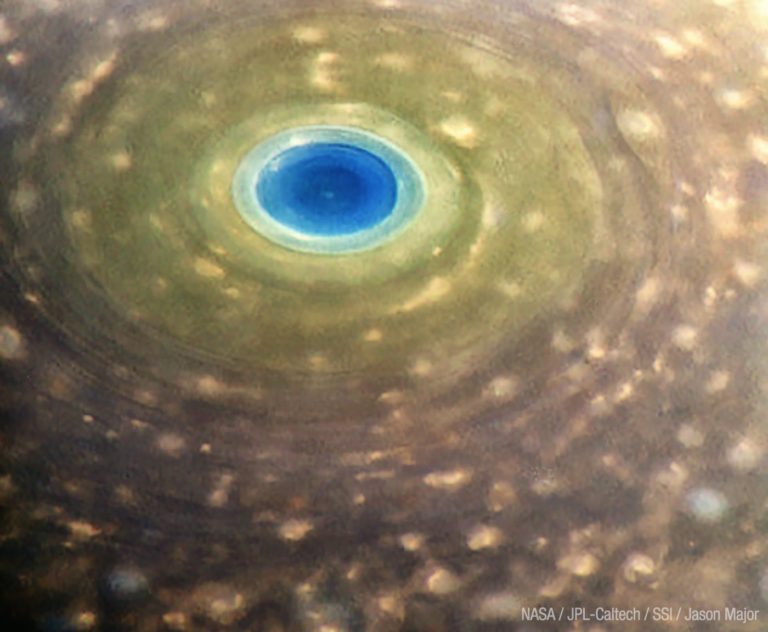
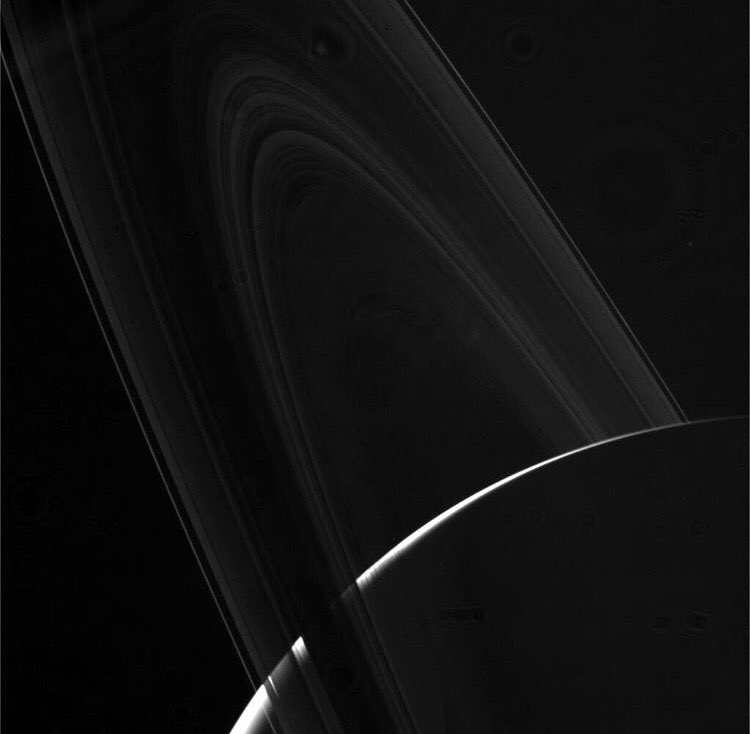
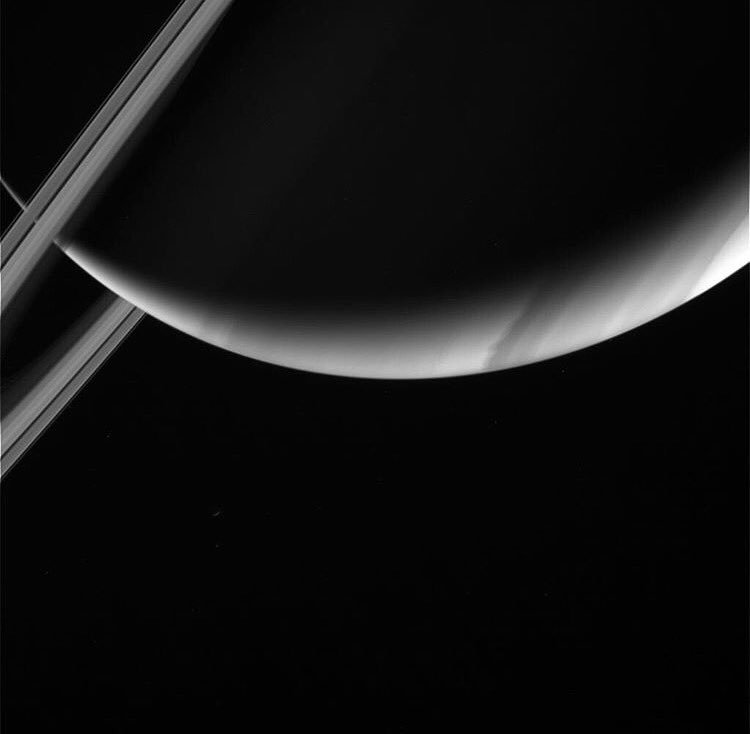
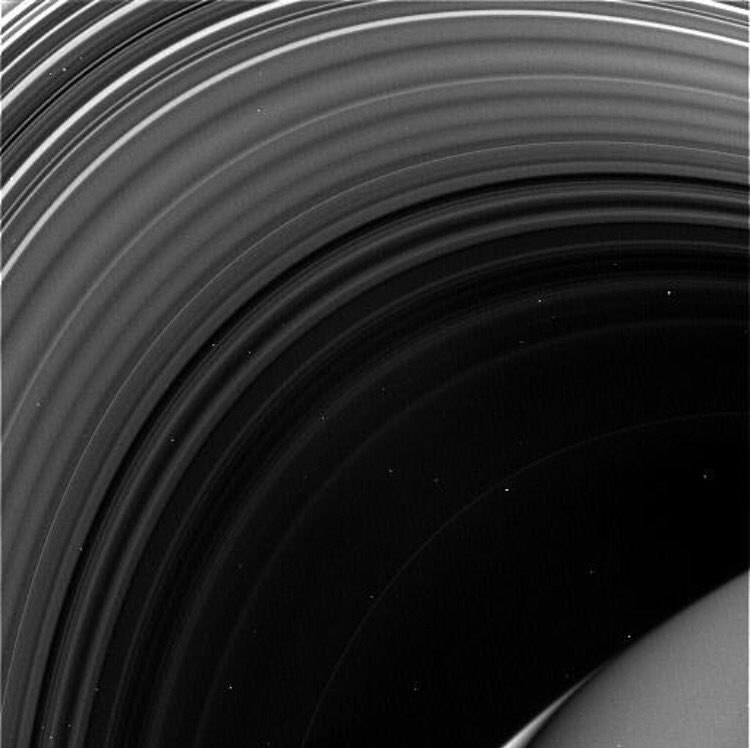
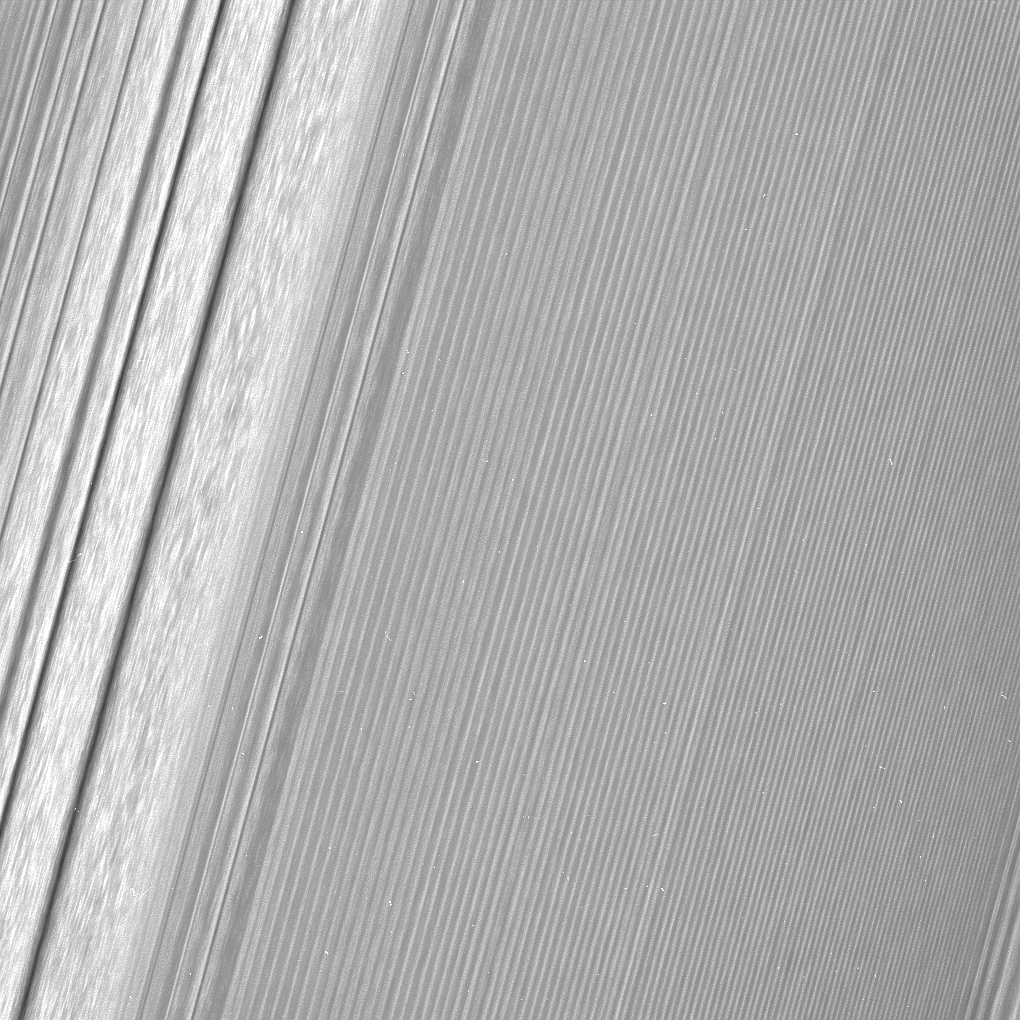
The ring dives have provided close-up views of Saturn and its rings never possible before, and there are still 19 more to go before the mission ends. No other spacecraft has entered this region before, between Saturn’s rings and the planet itself.
“No spacecraft has ever been this close to Saturn before. We could only rely on predictions, based on our experience with Saturn’s other rings, of what we thought this gap between the rings and Saturn would be like,” said Maize.
“In the grandest tradition of exploration, NASA’s Cassini spacecraft has once again blazed a trail, showing us new wonders and demonstrating where our curiosity can take us if we dare,” noted Jim Green, director of the Planetary Science Division at NASA Headquarters in Washington.
The next ring dive in the Grand Finale will be on May 15.
More information about the Grand Finale phase of the mission is here. All of Cassini’s raw images can be seen here on the mission website, and more information about the Cassini mission itself is available here.
Be sure to “LIKE” AmericaSpace on Facebook and follow us on Instagram & Twitter!
.





